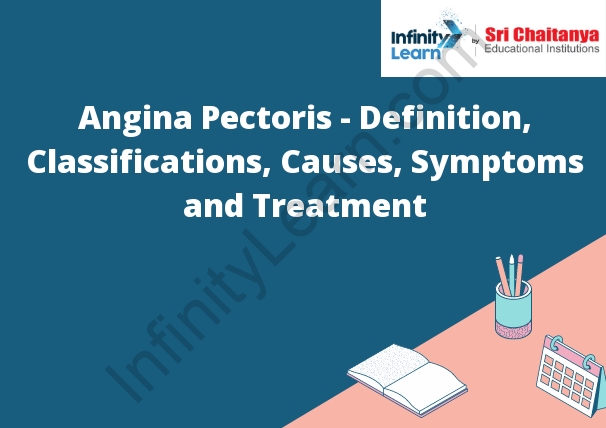Angina Pectoris
Angina Pectoris – Definition: Angina pectoris is chest pain that occurs when there is not enough blood flow to the heart. This is usually caused by coronary artery disease. The pain is usually felt in the chest, but can also be felt in the shoulders, arms, neck, or jaw. The pain may be sharp, dull, or aching, and it may come and go.

Classifications
- Angina pectoris is chest pain or discomfort that occurs when not enough oxygen-rich blood reaches the heart. The most common symptom is chest pain or discomfort. Angina may feel like a pressing or squeezing pain, usually in the center of the chest. The pain may also spread to the shoulders, neck, or arms. Shortness of breath, nausea, and sweating are also common. Angina can be caused by a number of things, including coronary artery disease, heart attack, heart failure, and spasm of the coronary arteries.
- There are three main types of angina:
- Stable angina is the most common type. It occurs when the heart is working harder than usual, such as during exercise. The pain is usually mild to moderate and goes away after a few minutes of rest.
- Unstable angina is a more serious type of angina. It occurs when the heart is working harder than usual and the pain does not go away after a few minutes of rest.
- Prinzmetal’s angina is a less common type. It occurs when the coronary arteries spasm, which reduces the amount of blood that reaches the heart. The pain is usually severe and lasts for a few minutes.
Causes
Angina pectoris is a chest pain that is usually caused by a lack of blood flow to the heart. This can be due to a blockage in one of the coronary arteries, which supply blood to the heart. The blockage can be due to a build-up of fatty deposits (atherosclerosis), which narrows the arteries. The chest pain is usually a sharp pain that may radiate to the left arm, jaw, or back. Other symptoms can include shortness of breath, nausea, and sweating. Treatment for angina pectoris includes medications to improve blood flow to the heart and lifestyle changes.
Symptoms
- Angina pectoris is chest pain or discomfort that occurs when not enough blood flows to the heart. The main symptom is chest pain. Angina may feel like pressure, squeezing, fullness, or pain in the center of the chest. The pain may also spread to the shoulders, arms, neck, jaw, or back.
- Other symptoms of angina pectoris may include shortness of breath, sweating, nausea, or a feeling of impending doom. The symptoms often happen during physical activity or emotional stress and go away within a few minutes with rest or medication.
- Angina pectoris is a common symptom of coronary artery disease. It is not a heart attack, but it may be a warning sign that a heart attack is happening or may happen in the future. Treatment for angina pectoris includes medications such as nitroglycerin and beta blockers, and sometimes surgery.
- If you have angina pectoris, it is important to rest when you have symptoms and to take your medications as prescribed. You should also see your doctor regularly for check-ups.
Treatment
- Angina pectoris is a chest pain that results from a lack of blood flow to the heart.
- The pain is usually described as a pressure or squeezing sensation in the center of the chest. The pain may also radiate to the shoulders, arms, neck, or jaw.
- The lack of blood flow to the heart can be caused by narrowed arteries or a spasm of the coronary arteries.
- Treatment for angina pectoris usually includes medications to improve blood flow to the heart and lifestyle changes.





